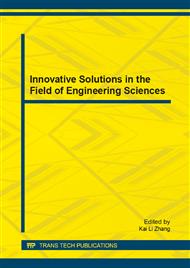p.13
p.19
p.23
p.27
p.32
p.37
p.42
p.48
p.53
Fatigue Analysis Based on the Non-Zero Point Force Moment Elasticity Theory
Abstract:
The current theory of elasticity persisted in the standpoint that normal stress exists in pure bending and shearing stress exists in pure torsion, which has been negated by the non-zero point force moment elasticity theory .The mentioned new theory proved that bending point moment exists in pure bending and torsional point moment exists in pure torsion, which debunk the current theory of elasticity that the limit moment acting on the unit area is zero. As a consequence, the causation of fatigue should be revised as point moment instead of stress. By using theory of stress and the new theory to analyze fatigue of non-slender rod, safety factor worked out by the former one is much bigger, which suggests that theory of stress cannot ensure safety. Undoubtedly, that is the fundamental causation of frequent occurrence of fatigue rupture. Thus, the new theory is of great significance in the prevention of unexpected fatigue rupture in the field of aerospace, navigation, transportation and mechanical engineering, etc.
Info:
Periodical:
Pages:
32-36
Citation:
Online since:
June 2014
Authors:
Keywords:
Price:
Сopyright:
© 2014 Trans Tech Publications Ltd. All Rights Reserved
Share:
Citation:


